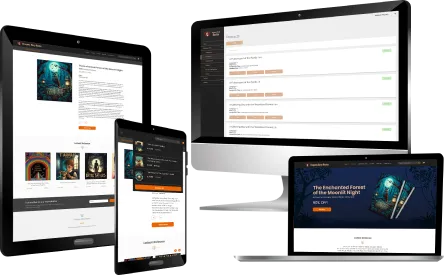What are the indicators for upgrading to more modern technology?
/ 3 mins readIn today's business world, rapidly advancing technology increases our reliance on digital tools and content to connect with clients. Despite their numerous benefits, these digital tools also introduce a range of challenges and issues that require our ongoing attention.

The modernization of technology and digital security
With constant advancements in computing and digital technologies, all businesses face the inevitable challenge of technological aging. Relying on outdated technological infrastructures is not just inconvenient; it poses a significant business risk. Aging technologies can hinder innovation, reduce productivity, and compromise security.
It's crucial not just to maintain but to proactively evaluate and align IT infrastructure with business goals. Recognizing the signs for updates or modernization is not only about timing but also about seizing opportunities.
By adopting and updating technologies, businesses can significantly enhance customer experience, innovate in their products and services, and strengthen their infrastructure's security. These steps contribute substantially to the company's growth, competitiveness, and operational efficiency.
Improving customer experience
Modernizing technologies enables smoother, more personalized, and responsive customer journeys. Integrating more modern systems allows businesses to provide more intuitive user interfaces, simplified business processes, and interactive platforms that meet today’s consumer expectations.
Innovation is a key driver of economic growth. By adopting cutting-edge technologies, businesses can explore new business models, develop innovative products and services, and enter new markets.
Custom digital solutions are an innovation cornerstone for businesses. They offer the ability to create products and services that are perfectly aligned with specific customer and market needs while ensuring the flexibility and scalability required to adapt to future changes.
Strengthening security and compliance
With the rise in digital threats and cybercrime, modernizing technologies is crucial for enhancing infrastructure security. New technological solutions incorporate advanced security features like data encryption, multi-factor authentication, and intrusion detection, protecting digital assets against cyberattacks.
Additionally, by updating systems and adopting platforms that comply with current regulatory standards, businesses can avoid legal penalties, minimize reputation risks, and build greater trust with their customers and partners. Security and compliance are not just legal necessities; they are key components of a company's value proposition in today's secure digital landscape.
Detecting warning signals
Being vigilant about warning signals requires a nuanced understanding of the technologies involved and their impact on business processes. These signals can manifest in various ways, from degraded application performance to difficulties integrating new features or systems. Sluggishness, recurring security breaches, or an inability to exchange data with modern systems all indicate it might be time to reassess and possibly modernize existing systems.
Limitations in managing and optimizing digital content
Technological limitations can severely hamper a company's ability to efficiently manage its digital content. When current systems do not support workflow automation, detailed access rights management, or content optimization for different distribution channels, it becomes clear that the technology is lagging. These limitations not only result in time loss and inefficiency but can also compromise the integrity and security of digital assets. Modernizing to more advanced solutions not only overcomes these hurdles but also fully leverages digital assets for a more impactful content strategy.
Difficulties integrating with new digital tools
The technological ecosystem of a modern business is constantly evolving, with regular adoption of new tools to enhance productivity and efficiency. However, when existing systems cannot seamlessly integrate with these new tools, it creates information silos, compromises workflow, and limits the company's ability to operate agilely. Integration difficulties often signal that the underlying platform has become an innovation and collaboration barrier, highlighting the urgent need for modernization to ensure smooth interoperability and support a collaborative work culture.
Degraded performance of content platforms
Performance is critical in today’s digital landscape, where users expect fast and frictionless experiences. When content platforms experience slow loading times, frequent downtime, or an inability to handle high traffic volumes, it not only detracts from the user experience but can also impact SEO rankings and brand perception. These symptoms of degraded performance clearly indicate that existing technologies no longer meet current market demands, making modernization not just desirable but essential for maintaining competitiveness and user engagement.
Recognizing these warning signals is crucial for remaining relevant and competitive in the market. Technology modernization is not merely an upgrade; it's a strategic reassessment that opens the door to significant improvements in operational efficiency, user experience, and innovation capacity.
By proactively responding to these signals, you can avoid the risks associated with obsolete systems and seize the opportunities presented by new technologies.
At httpmedia, we are dedicated to turning your digital challenges into growth opportunities. Contact us to explore how our custom solutions and the Digital Hat can propel your business to new heights. We are eager to put our expertise to work for you.

